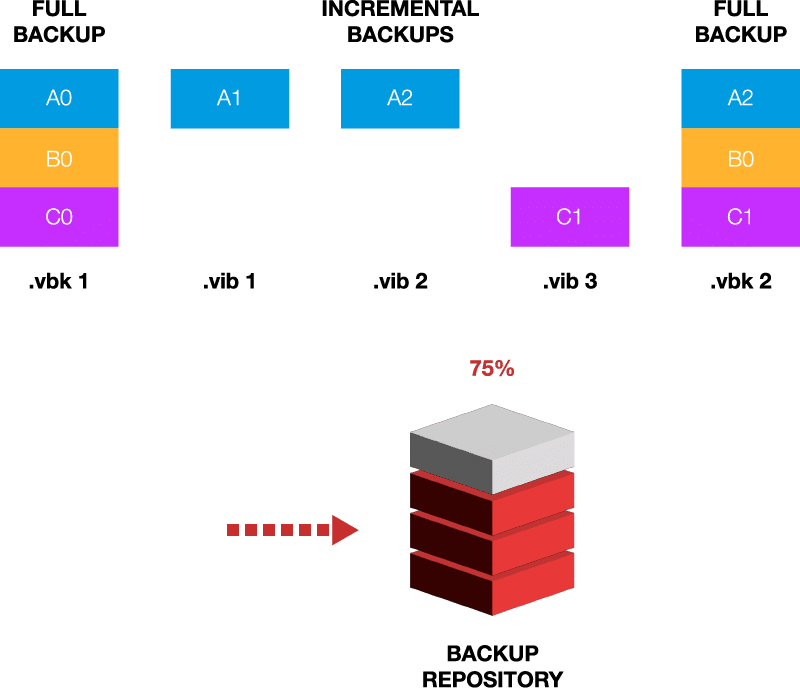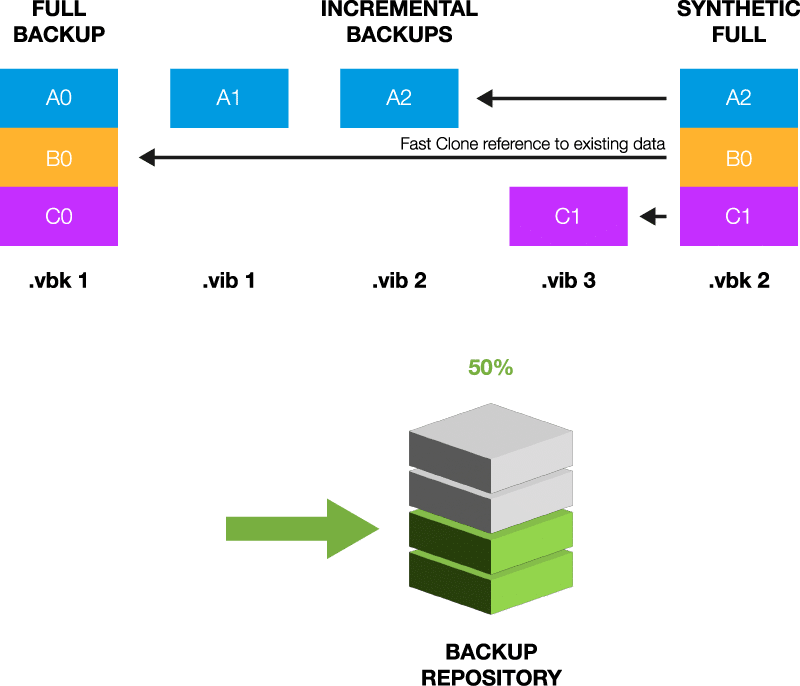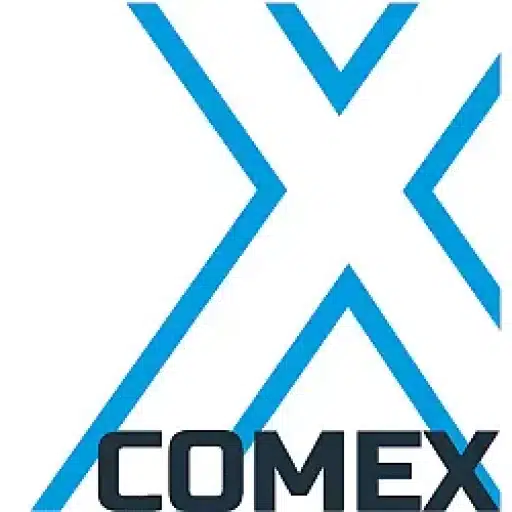+31 (0)43 30 88 400 | office@comex.eu
Fast Clone Support
Fast Clone Support for Veeam backup & recovery – The turbo for your primary and secondary backup. Exclusive to Silent Bricks.
Fast Clone Support requires at least software version 2.59.

Much faster.
With FAST Clone Support, the backup window shortens by up to 80%.
Much smaller.
With Fast Clone Support, your backup requires up to 50% less storage space.
Much safer.
With Fast Clone Support, you can achieve Immutability almost without extra effort.
The backup dilemma:
Backups basically always follow the same schedule:
- First, a full backup (Full Backup) is created and stored.
- Over a period of time, differences from the first full backup are periodically recorded and stored as incremental backups (Incrementals).
- Then another full backup is created and stored as a new starting point for the next incremental backups.
- When the desired backup period is reached, the oldest full backups and associated incremental backups are deleted (rotation).
- To secure backups independent of the backup software through immutability, the storage system takes regular snapshots, which are also written and deleted according to the rotation principle.
The intervals between incremental backups and between full backups, as well as the backup period, are individual for each data class and application and largely determine the technology used.
As you can see, this process creates a lot of duplicate data.
The more full backups are written and the longer the backup period is, the greater the storage requirement, which can quickly be 10-20 times the original data quantity to be protected.
Because any full backup also requires transferring and storing a huge amount of data, such conventional backups sometimes take a very long time. Often backups threaten to exceed the available backup window.

Fast Clone & RefLink:
Synthetic Full
To largely avoid this duplicate data, Veeam Backup & Recovery can reference and link (RefLink) data blocks once written. A“Synthetic Full” thus generated consists only of references to the data blocks already present on the storage system. Veeam calls the process of creating such a “link collection” Fast Clone.
This is much faster and, of course, consumes much less storage space than writing a new “real” full backup each time.
The consequences: Significantly less storage space is consumed and the time for a full backup is drastically reduced.
In the secondary target, this allows many restore points to be created over a long backup period without the storage requirements and backup time getting out of hand.
Forever Incremental
In the primary target, where data directly needed for operational business is stored, multiple full backups are often waived – partly because older data is in the secondary target anyway, and partly because here speed of recovery is important and therefore expensive flash media is used.
Again, Fast Clone can save significantly on storage space and time.
Of course, because a new full set must always be present before a full backup set can be deleted, storage space for two full sets is always required as a minimum. Veeam has also come up with a solution for this: Forever Incremental.
After the first full backup, only incremental backups are written. At the end of the backup period, the first incremental backup is merged with the full backup via Fast Clone and then deleted. This repeats after each backup interval so that there is always only one full backup and the set number of incremental backups on the storage system.

Immutability:
Continuous Snapshots
The problem of duplicate storage is exacerbated by Immutability. Thanks to Fast Clone Support, however, this changes – at least with the integrated Continuous Snapshots in the Silent Brick System. This rotating snapshot logic is independent of the backup software and equipped with retention policies, so it cannot be compromised by backup software accounts or storage system user accounts.
Continuous Snapshots effectively secure backups against attacks – regardless of the backup software.
And with Fast Clone, the time- and storage-intensive duplication of data is avoided. The Silent Brick System physically captures data within Continuous Snapshots only when it is deleted – intentionally by rotation or unintentionally by attack – in the backup logic. Only after the expiration of the set retention period is the storage space released, so one can always return to previous versions.
And while without Fast Clone Support, multiple true full backups exist and thus must be secured, with Fast Clone Support and Synthetic Fulls, almost only Incrementals exist – reducing time and storage requirements for Continuous Snapshots as well.

